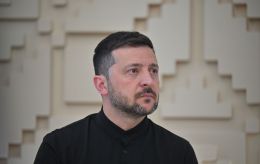Popular Greek island says no to tourists: What travelers need to know
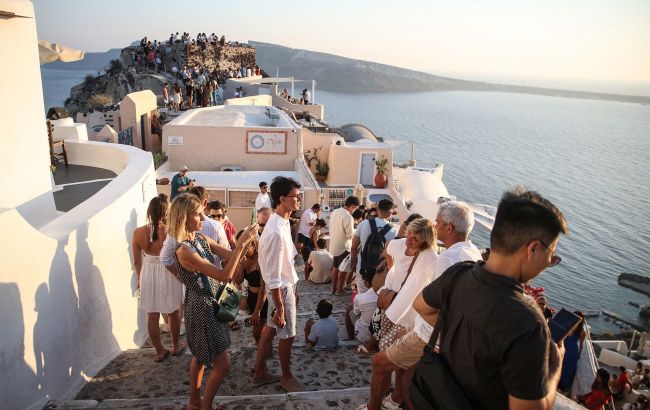 Over-tourism harms local residents and nature (Photo: Getty Images)
Over-tourism harms local residents and nature (Photo: Getty Images)
Local residents and authorities of the Greek island of Santorini are ready to say no to some travelers due to the burden of excessive tourism.
What is known about the island, why it is popular, and why it might limit the number of tourists.
Contents
- What you need to know about Santorini
- Why Santorini is so popular
- Why the island might limit tourists
What you need to know about Santorini
Santorini is a volcanic island in the Aegean Sea, shaped like an open ring. It is a part of the Cyclades archipelago and is extremely popular among tourists.
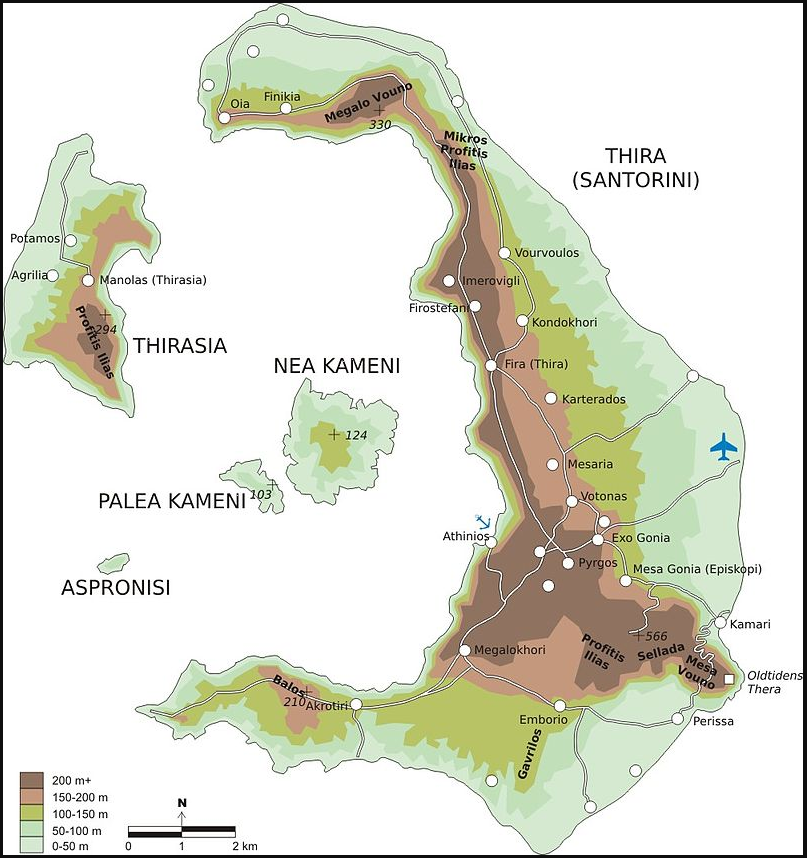
Santorini Island (map: uk.wikipedia.org)
This island is the remnant of a volcano, with its crater located directly in the sea. It is believed that the earliest inhabitants settled on Santorini around 3000 BC. At that time, the island might have been called Strongýlē (Round) due to its shape (as the volcano had not yet caused destructive changes).
Around the 14th century BC, as a result of a massive volcanic eruption, which was accompanied by a series of destructive earthquakes, part of the land (including the volcano’s crater) sank underwater, creating a huge caldera (a funnel filled with the sea), known today as the "half-moon" and several other islands.
Scientists assert that the disaster was so large-scale that it halted the development of Mediterranean civilizations for a long time (some studies even suggest the decline of the entire Minoan civilization).
Some researchers also speculate that this volcanic eruption may have inspired the myth of the mysterious Atlantis.
The modern name Santorini was given at the beginning of the 13th century (in 1204). It translates from Greek as "Island of Saint Irene" (Santa Irini).
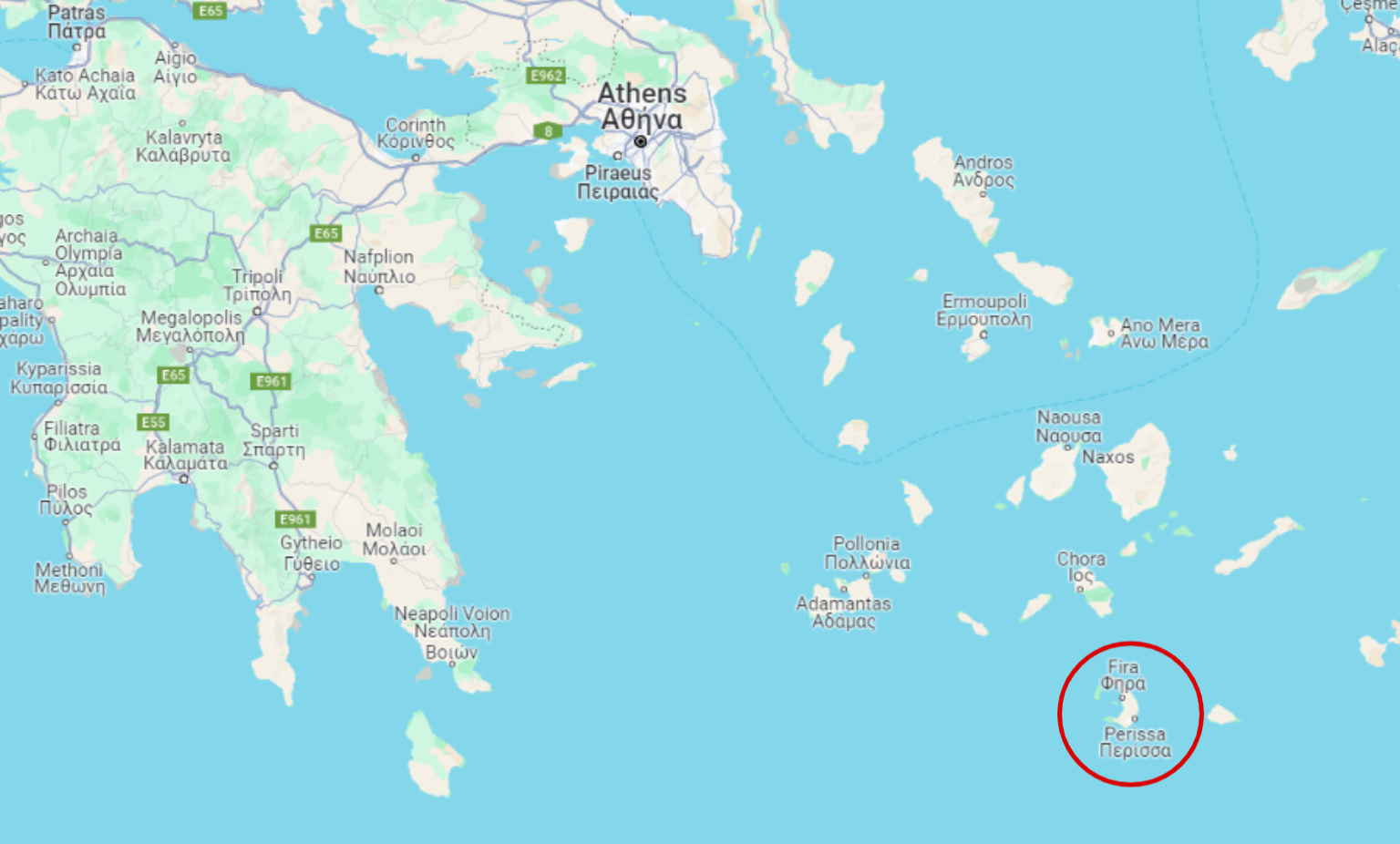 Santorini’s location (map: google.com/maps)
Santorini’s location (map: google.com/maps)
Why Santorini is so popular
Santorini is a favorite vacation spot for many tourists from around the world. It's known as the island of wine, churches, and whitewashed houses.
Interestingly, most of the buildings are predominantly white and blue (though some houses are now painted in bright yellow, orange, and other colors). It is believed that during the harsh Turkish occupation, the locals, striving to preserve their identity, painted all the churches and many secular buildings in the colors of the Greek national flag during one of the nights.
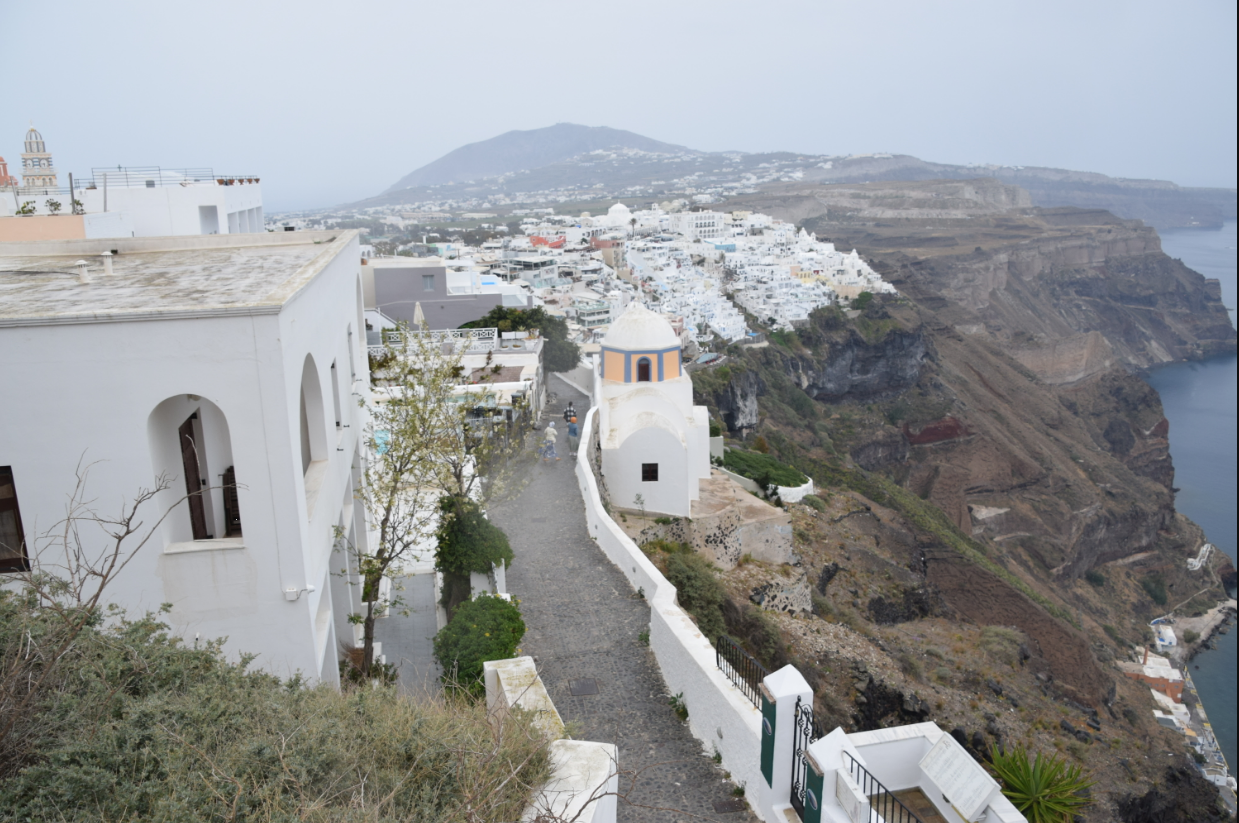
Fira City (Photo: commons.wikimedia.org)
The high season in Santorini lasts about eight months - from late March to late November.
The most popular towns are Fira (the capital) and Oia, located on the top of cliffs. Their houses are built on top of one another, though at different levels. Thus, the courtyard of one house serves as the roof of another. Most of them house hotels, restaurants, taverns, or souvenir shops.
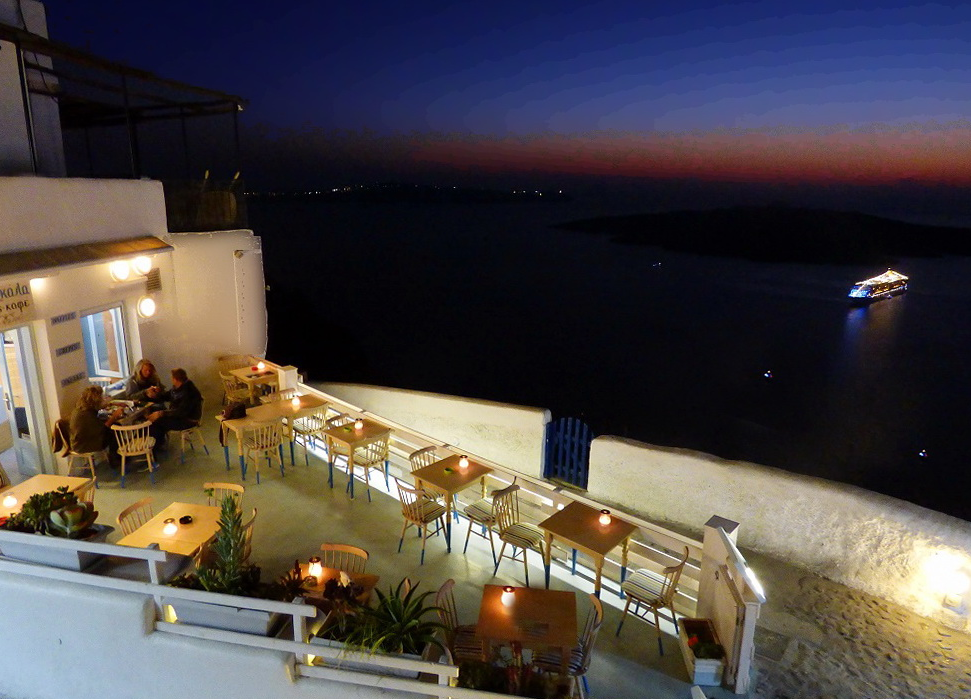
Evening in Santorini (Photo: commons.wikimedia.org)
Visitors can get to the top from the dock in several ways - by bus, cable car (funicular), on foot, or by donkey (of which there are many on the island).
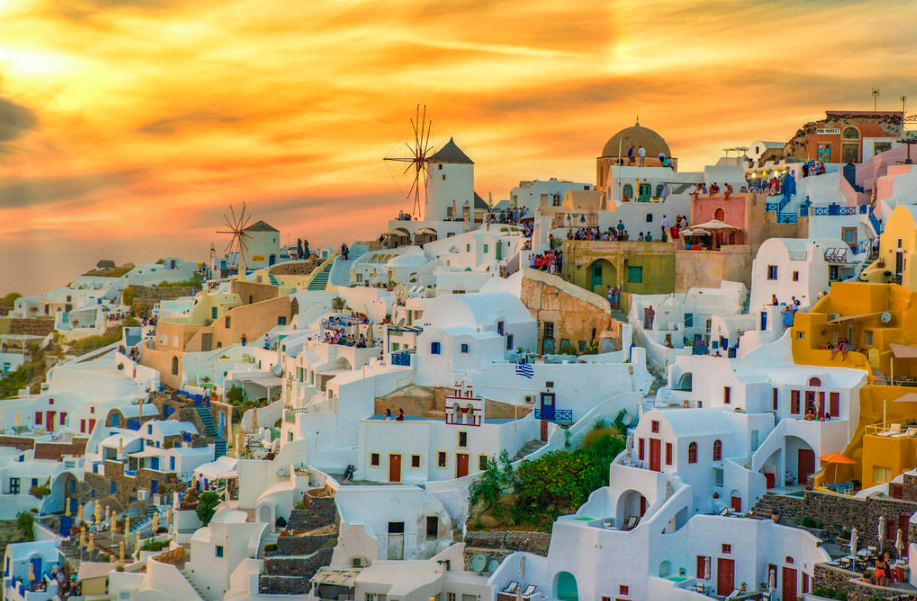
An incredible sunset in Oia (photo: commons.wikimedia.org)
History enthusiasts can visit the ruins of the ancient city of Akrotiri, the Venetian fortress ruins, the medieval village of Pyrgos, the Archaeological Museum, the Museum of Prehistoric Thera, the Naval Museum, the partially ruined fortress of St. Nicholas (one of the five Venetian fortresses on the island), and more.
Believers might be interested in the Elias Monastery at the highest point of the island or any of the other churches (which are almost as numerous as the houses on Santorini).
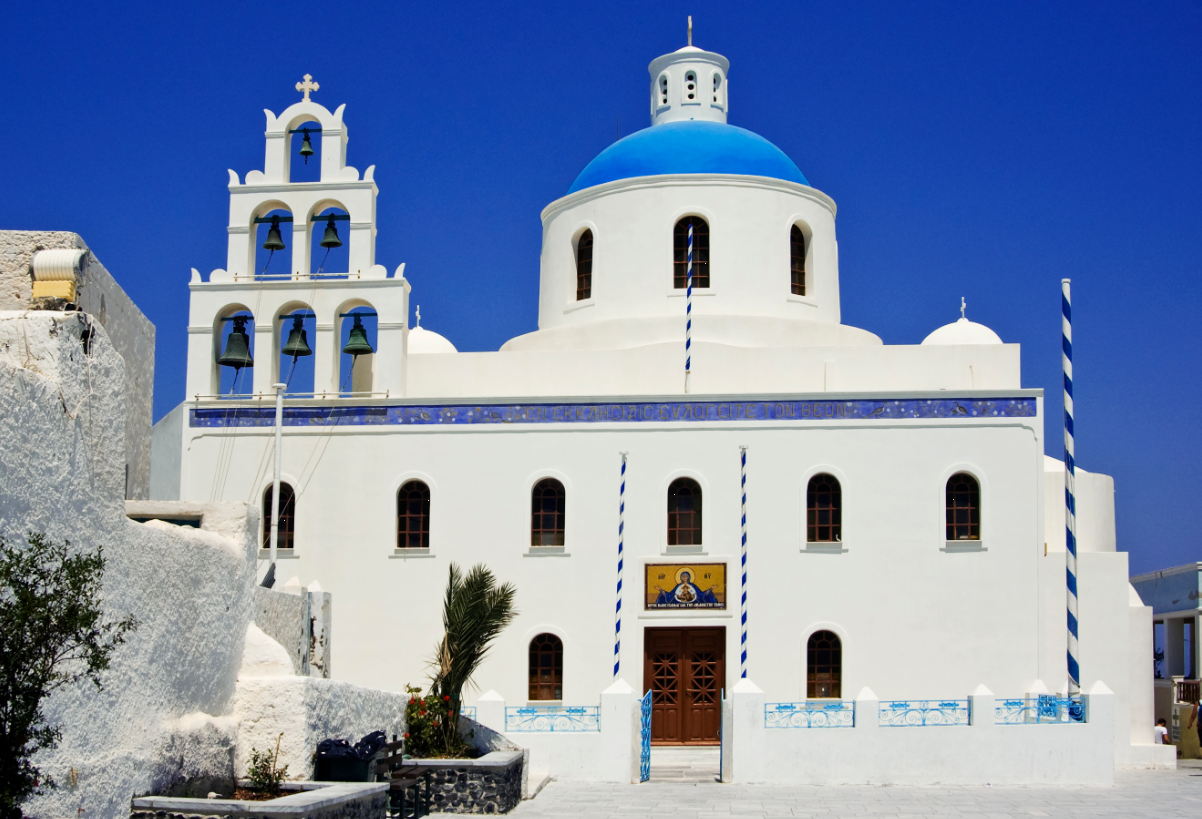
One of the temples in the city of Oia (photo: commons.wikimedia.org)
Meanwhile, the island’s natural riches offer travelers a variety of volcanic sand and pebble beaches in white, red, and black (some surrounded by pumice cliffs), black-red volcanic rock formations, basalt boulders, thermal springs, breathtaking views (sunsets are particularly popular among tourists), the amazing Aegean Sea, and the still-active volcano on Nea Kameni.
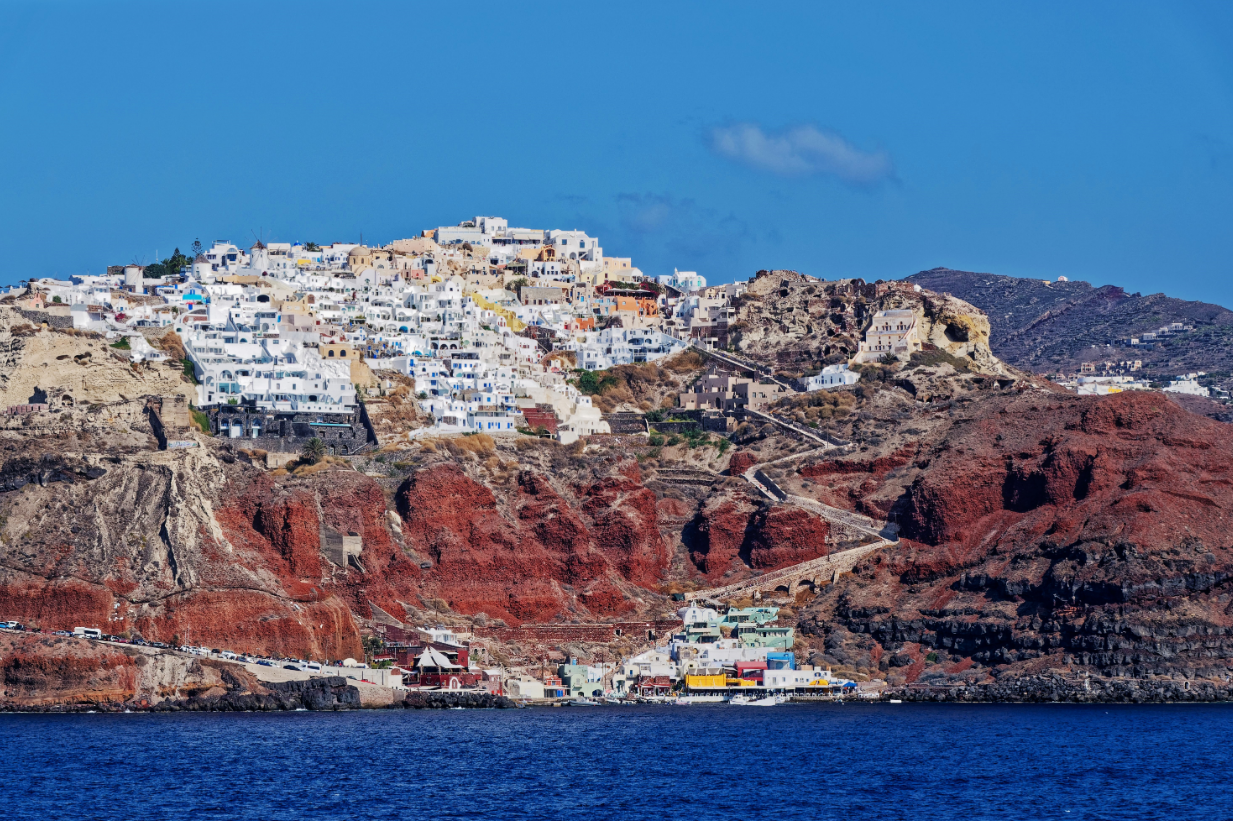
Black and red volcanic rocks (Photo: commons.wikimedia.org)
Among the island’s vegetation, cacti and vineyards are predominant. As a result, the islands offer a unique local wine called Vinsanto, made using special secret techniques.
You can reach Santorini by plane (from Athens), by ferry (from Athens, the island of Rhodes, or the island of Crete (Heraklion)), or by cruise ship.
Why the island might limit tourists
After the COVID-19 pandemic, Greece is setting records in tourism, which accounts for about a quarter of the country’s economy.
At the same time, many locations are experiencing what is known as over-tourism - when the number of travelers exceeds the capacity of local infrastructure, natural environments, and communities to accommodate and serve them without significant negative consequences.
This phenomenon is characterized by a significant increase in tourist flow, leading to a range of problems, including environmental, social, economic, and cultural issues.
Such a situation exists in Santorini, where on peak days during the high season, around 17,000 cruise ship passengers arrive (while the permanent population is about 20,000). Overall, the islands can accommodate about 3.4 million visitors per year.

Tourists in Santorini (photo: commons.wikimedia.org)
Given this, Santorini’s mayor, Nikos Zorzos, proposed reducing the number of cruise ship passengers to 8,000 per day. This move has also been supported by Greek Prime Minister Kyriakos Mitsotakis.
According to the official, these restrictions are likely to be implemented starting from 2025.
Residents mostly support this initiative, though some claim that overtourism does not exist.
Local tour operator and Santorini resident Gianluca Chimenti told journalists that he sees "a lack of structures" and outdated infrastructure on the island, which is under significant pressure (especially the central port). He added that this season is one of the worst in history, as the island is almost empty.
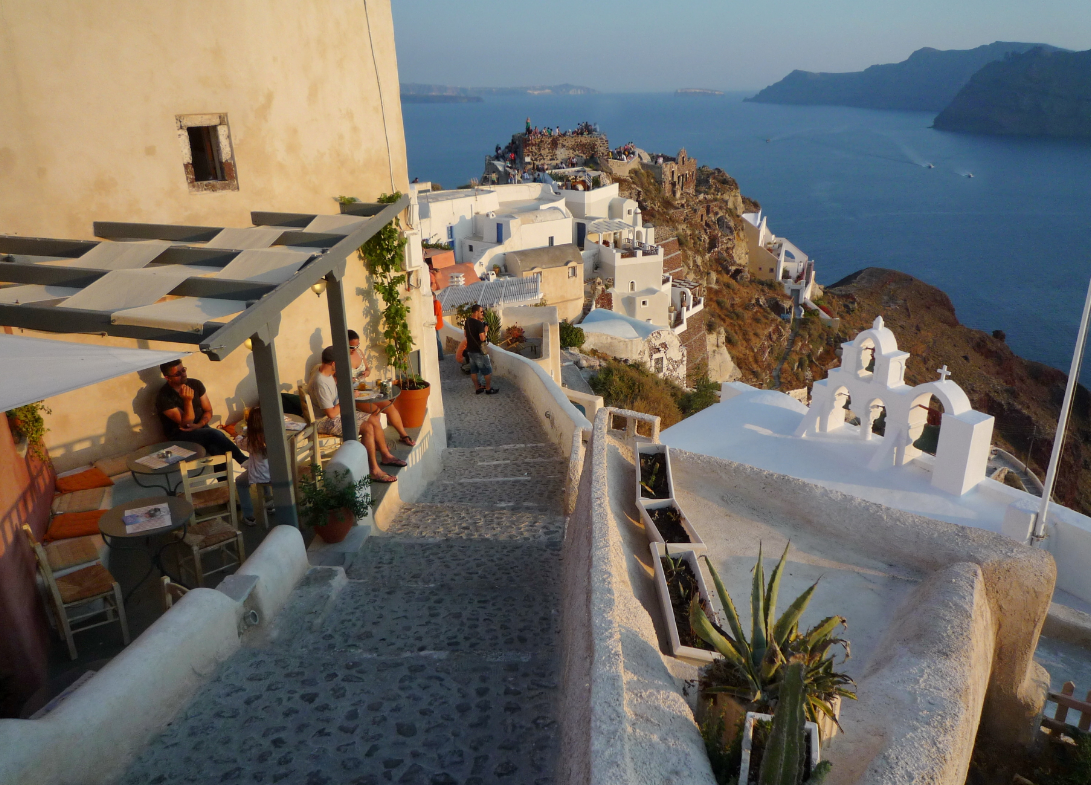
A walk around the island can provide unforgettable emotions (Photo: commons.wikimedia.org)
On August 1, the Cruise Lines International Association (CLIA) reported that it had met with Greece’s Minister of Maritime Affairs, Christos Stylianides, to discuss the crisis, potential improvements, and modernization of port infrastructure and services.
"Recently, the growth of tourism in Greece has garnered significant attention, particularly concerning the islands of Santorini and Mykonos," said Maria Deligianni, CLIA’s regional director for the Eastern Mediterranean, and confirmed the cruise companies' commitment to maintaining the maximum number of visitors at 8,000 passengers.
According to her, diversifying tourist routes could also help reduce the pressure on the most popular spots.

Cruise ship near Santorini (Photo: commons.wikimedia.org)
Sources: CNN, Bloomberg, Wikipedia, tsikavi-fakty.com.ua, tripmydream.ua, Google Maps, Exploropia YouTube channel.

